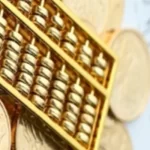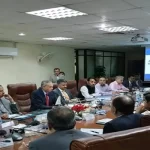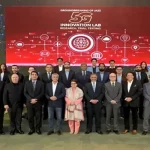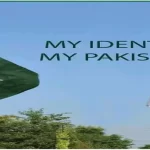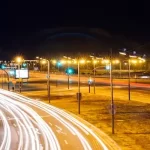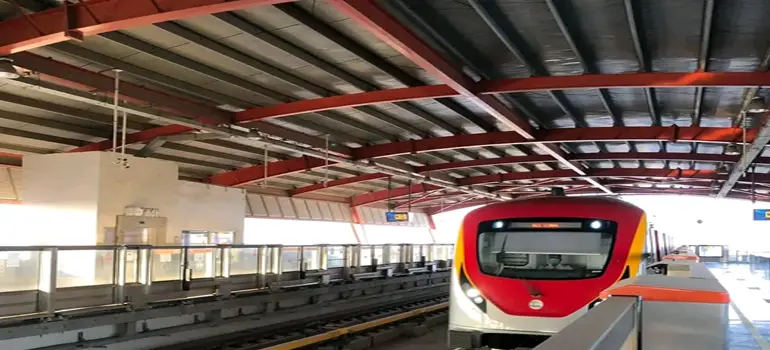
Public Transportation in Pakistan
Any country’s growth and progress depend heavily on public transit. More than ever, Pakistan, a nation of over 220 million people, needs effective, accessible, and sustainable public transportation networks. This article will examine the current situation of Pakistan’s public transportation, its difficulties, and proposed fixes for a better, more sustainable future.
Pakistan’s Public Transportation System at the Present Time
In Pakistan, the majority of public transportation is provided by a combination of buses, minibuses, rickshaws, and a sparse rail system. These systems do, however, encounter various difficulties that limit their effectiveness and usability.
- insufficient infrastructure
The absence of proper infrastructure is one of the main obstacles. Many towns and cities experience traffic jams. Cities and towns experience traffic congestion, poor bus stops, and a lack of lanes the: Transport and Driving in Pakistan. specifically designated for public transportation, which causes lengthy delays and discomfort for passengers.
- Advertisement -
- Overcrowding
The majority of buses and minivans carry far more passengers than they can accommodate, making for crowded and uncomfortable rides. Passengers experience inconveniences and safety hazards as a result of this.
- Safety Issues
In Pakistan, problems with safety are frequently encountered using public transportation. Accidents and injuries are caused by poorly maintained automobiles, careless driving, and a lack of adequate safety precautions.
- Accessibility Issues
Not everyone in Pakistan has access to public transit. Mobility is difficult for this group of people since many vehicles lack the features they need for those with impairments.
- Effect on the Environment
the use of old, inefficient automobiles, as well as and poor upkeep lead to the deterioration of the ecosystem and air quality.
Problems and Possible Solutions
Pakistan must make investments in upgrading and growing its public the Public Transport Operators in Punjab. transportation system in order to overcome these obstacles. Here are a few potential answers: Public Transportation in Pakistan
- Construction of infrastructure
Public transit can be made more effective by investing in upgraded road infrastructure and designated bus lanes to assist reduce traffic congestion. Other cities can use Lahore’s bus rapid transit system as an example for how to develop their own BRT systems.
- Modernization of the Fleet
Modern, environmentally friendly automobiles can replace old, inefficient ones to lessen environmental effect and enhance passenger comfort. Hybrid and electric buses provide a cleaner, more environmentally friendly alternative.
- Safety precautions
enforcing stringent safety laws, conducting routine vehicle inspections, and giving drivers instruction Public Transportation in Pakistan.
- All Accessibility
It is crucial to make public transit accessible to those with impairments. This entails accommodating wheelchairs in bus stops and cars as well as offering assistance to those who are blind or deaf.
- Coordination and Integration
Passengers may find it more convenient if there is an integrated public transportation system that uses buses, trains, and other forms of transportation. Waiting times can be decreased and traveling made simpler with effective coordination across different kinds of transportation.
- Cost and Accessibility:
It is essential to keep public transit accessible to people of all income levels. It might be a more affordable choice for the majority of people with subsidies or clever pricing policies.
The Bus Rapid Transit (BRT) System in Lahore
With the implementation of the BRT system, Lahore, the capital of Punjab, has made great advancements in the field of public transit. This cutting-edge transit system, which debuted in 2020, features electronic ticketing, new buses, and dedicated lanes. It has shortened travel times and improved the effectiveness of the city’s public transit. Other Pakistani cities aiming to upgrade their public transportation systems can take inspiration from Lahore’s BRT’s success.
The Function of Technology
The improvement of Pakistan’s public transportation system depends heavily on technology. The following are some ways technology can help: Public Transportation in Pakistan.
- Tracking in real-time
Passengers may plan their journeys more effectively with the aid of real-time tracking and scheduling apps, which can also decrease wait times and improve convenience.
- Digital payments:
the advent of contactless Smart cards and mobile wallets, which use contactless payment methods, can simplify the ticketing procedure and lessen the need for cash.
- Analytics of data
Transportation authorities can improve the whole system by using data analytics to discover patterns, optimize routes, and make data-driven choices.

Sustainability of the environment and public transportation
It is impossible to overlook how public transportation affects the environment in Pakistan. A increasing worry is air pollution, which is exacerbated by the use of old, inefficient vehicles. An environment that is healthier and more sustainable can be achieved by switching to cleaner, greener solutions, such as electric buses, and by enacting emission-reduction regulations. Numerous obstacles hinder Pakistan’s public transportation system, but with the appropriate plans and resources, things may get a lot better. A Pakistan confronts many obstacles, but with the correct plans and financial support, things could get a lot better.
A well-designed, effective, and environmentally friendly public transportation system can not only improve mobility for the general population but also lessen traffic, air pollution, and the burden on the existing infrastructure. To promote a more accessible and sustainable future, Pakistan must keep innovating and place a high priority on public transit. There is hope for a better future thanks to the success stories of places like Lahore and technological breakthroughs. Collectively, Pakistan’s residents may develop a cutting-edge, effective, and eco-friendly public transportation system for the good of all. Public Transportation in Pakistan.
Conclusion
In conclusion, there are significant issues with Pakistan’s public transportation system that have an impact on the daily lives of its residents. It is critical to address problems including shoddy infrastructure, overpopulation, and safety difficulties. The path to a better future can be paved by taking inspiration from Lahore’s BRT system’s success and embracing modernization and technology advancements. Public Transportation in Pakistan.
All income groups should have access to affordable public transit; therefore, this should be a top focus. Additionally, it is crucial to prioritize environmental sustainability by using cleaner, greener modes of transportation. By making investments in and making changes to its public transportation infrastructure and policy, Pakistan has the opportunity to increase mobility, decrease congestion, and contribute to a more sustainable future Public Transportation in Pakistan.
FAQs
What are the typical public transportation options in Pakistan?
Public transportation in Pakistan typically consists of buses, minibuses, rickshaws, and a sparse rail system.
What are Pakistan’s public transportation system’s main problems?
Inadequate infrastructure, crowding, safety worries, a lack of accessibility, and environmental effect are some of the difficulties.
What can Pakistan do to upgrade its transit system?
Infrastructure development, fleet modernization, safety precautions, accessibility advances, integration, reasonable pricing, and technological utilization can all result in improvements.
Exists a successful public transportation system in Pakistan?
Yes, Lahore’s Bus Rapid Transit (BRT) system is a laudable example of how public transit might be improved. Public Transportation in Pakistan.
More Read Pia Fokker F-27

